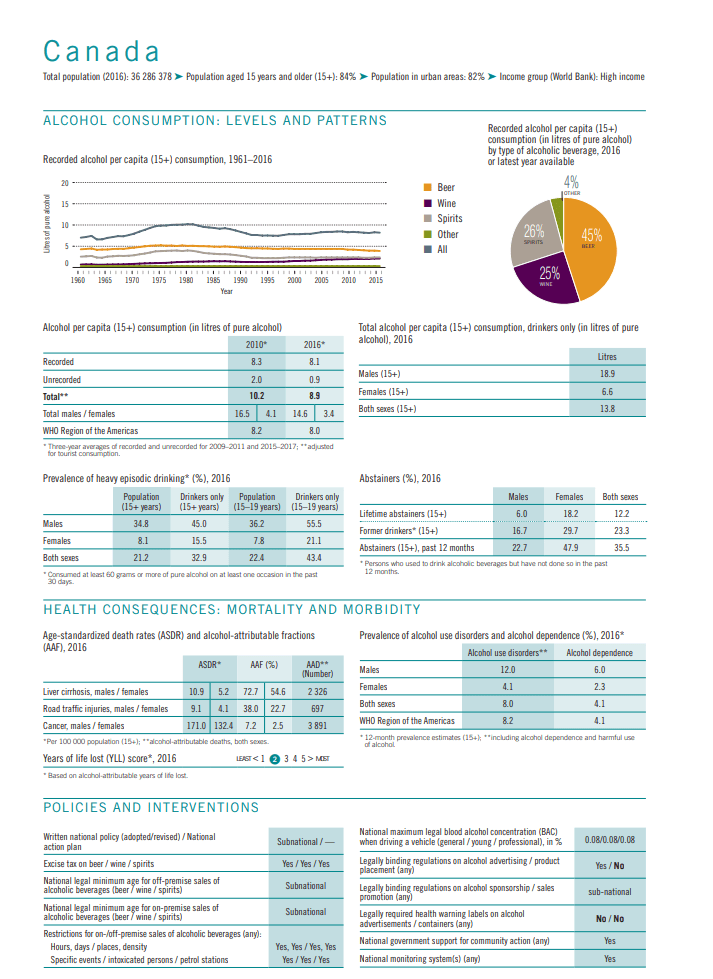Ontario, Canada: Alcohol Policy Weakened
The Ontario Government has made a number of regulations and weakened the Liquor License Act – including the permission to sell and serve alcohol at 9 a.m every day of the week.
The changes are as follows:
- Permitted hours of sale and service for businesses with a Liquor Sales License or Limited Liquor Sales License changed to 9 a.m. from the previous 11 a.m.
- Businesses who hold a Limited Liquor Sales License can now serve any serving size of alcohol they desire. Before, these manufacturers could only sell and serve in prescribed quantities.
- Removed the prohibition of use of terms such as “Happy Hour” and “cheap drinks,” which was banned under the Liquor Advertising Guidelines for businesses with a Liquor Sales License or Limited Liquor Sales License.
- Greater flexibility given for Special Occasion Permit holders in determining the appropriate boundaries of the area under the permit. Previously, the area had to be defined by a 0.9-metre partition to identify the boundaries of the permit area.
This means that Ontario is expanding the sale of beer, wine and cider to almost 300 more stores as part of Premier Doug Ford’s push to weaken alcohol policy regulation in the province. Ford promised during last spring’s election campaign to make beer and wine available in corner stores, grocery stores and big box stores.
The number of LCBO agency stores in underserviced areas, which will be rebranded LCBO Convenience Outlets, will rise to 60 in August, and up to 200 by spring 2020.
Another 87 grocery stores will also be allowed to sell alcohol starting in September, bringing the total to 450 across the province.
Government uses Big Alcohol propaganda to announce policy changes
That @ONfinance is claiming success over ⬆️ alcohol availability is mind-boggling🤯 Clearly indicates corporate capture‼️
⬆️ alcohol availability = ⬆️ alcohol harm = ⬆️ costs (social, economic, human)
Alcohol costs far outweigh economic contributions #fact #StopCorporateAbuse https://t.co/OYvAKH0ClZ— IOGT International (@IOGTInt) May 25, 2019
The changes increase availability as well as exposure to alcohol marketing, which will no doubt affect consumption rates in Ontario – a worrying prospect given the current levels of alcohol harm in Canada.
Pervasive alcohol harm in Canadian families, communities
As WHO reports, per capita alcohol consumption in Canada at 8.9 litres is higher than the average of the WHO region of the Americas – the region with the second highest alcohol use worldwide. Canadian men suffer from both alcohol use disorders and alcohol dependence more than the average of the region. Heavy episodic alcohol use is also widespread, including among young people and especially among males. In Canada, alcohol is also causing almost 4000 cancer deaths.
Despite the harm, Canada is yet to adopt a national alcohol control policy and action plan. Sub-national policy changes such as in Ontario further weaken alcohol control in Canada, leading to a greater health, social and economic burden in the long run.
